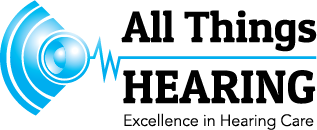Are you looking for a Comprehensive Hearing Test Forest Lake?
Ready to take the first step towards better hearing?
Let’s talk!
Connect with us today! Fill out the contact form below to schedule your personalised hearing consultation at All Things Hearing. Our expert team is committed to guiding you on your journey to improved hearing health. Don't wait to enhance your quality of life. Reach out now – we're here to listen and help!
Follow us:
A comprehensive hearing test is a complete evaluation of your auditory system performed by an audiologist in a soundproof room. You'll wear headphones while responding to various tones and sounds, undergo speech recognition testing, and possibly have additional assessments like tympanometry and acoustic reflex testing. Your results are mapped on an audiogram, showing any hearing loss from mild to profound. Understanding your test results opens the door to effective treatment options.
What Is a Comprehensive Hearing Test?
What exactly happens during a comprehensive hearing test? A trained audiologist will conduct a series of evaluations to assess your hearing ability across different frequencies and volumes. The test typically takes 30-60 minutes in a soundproof room.
You'll wear headphones and respond to various tones and sounds by pressing a button or raising your hand. The audiologist will also test your speech recognition by asking you to repeat words at different volume levels. They may examine your ear canal and eardrum using an otoscope.
Additional tests might include tympanometry to check your middle ear function and acoustic reflex testing to evaluate how your ears respond to loud sounds. After completing these evaluations, your audiologist will explain your results using an audiogram and discuss treatment options if needed.
Types of Tests Performed During Your Assessment
During a comprehensive hearing assessment, you'll undergo several distinct types of tests to evaluate different aspects of your hearing function. Your audiologist will conduct pure-tone testing to determine the softest sounds you can hear at various frequencies, and speech recognition tests to assess how well you understand words at different volume levels.
You'll also receive tympanometry to check your middle ear function and acoustic reflexes. This involves measuring how your eardrum moves in response to air pressure and loud sounds. Some assessments may include otoacoustic emissions testing, which evaluates your inner ear's hair cell function, and bone conduction tests to determine if hearing loss is conductive or sensorineural. Your audiologist might recommend additional specialized tests based on your specific symptoms and medical history.
Preparing for Your Hearing Evaluation
Proper preparation before your hearing evaluation helps ensure accurate test results. Before your appointment, avoid exposure to loud noises for at least 12 hours. Don't wear earbuds, attend concerts, or work with power tools during this time, as temporary threshold shifts can affect testing accuracy.
Make a list of your medical history, current medications, and any specific hearing difficulties you've noticed. If you use hearing aids, bring them to your appointment. Clean your ears gently, but don't use cotton swabs or attempt to remove wax yourself. Arrive 15 minutes early to complete paperwork and provide insurance information.
Consider bringing a family member or friend who can help you remember important details and assist in understanding the test results and recommendations.
Understanding Your Test Results
Your hearing test results provide detailed insights into your auditory health through an audiogram – a visual graph showing how well you hear different frequencies and volumes. The graph plots sound frequencies (Hz) along the horizontal axis and volume levels (dB) on the vertical axis, with marks indicating the softest sounds you can detect.
Normal hearing typically falls between 0-25 dB. If your results show higher numbers, you may have mild (26-40 dB), moderate (41-70 dB), severe (71-90 dB), or profound (91+ dB) hearing loss. The audiologist will explain which frequencies are affected and whether the loss is conductive (outer/middle ear), sensorineural (inner ear), or mixed. They'll use these findings to recommend appropriate treatment options, from hearing aids to medical interventions.
Treatment Options Based on Test Findings
Treatment options vary significantly based on the type and severity of hearing loss revealed in your test results. Your audiologist may recommend hearing aids, which come in various styles from nearly invisible in-ear models to behind-the-ear devices. For severe hearing loss, cochlear implants might be suggested if you're not getting adequate benefit from hearing aids.
If your test shows conductive hearing loss due to ear wax buildup or infection, you'll likely need medical treatment such as removal of blockage or antibiotics. Some patients may benefit from surgical interventions like tymplanoplasty or stapedectomy. Your doctor might also suggest assistive listening devices, speech therapy, or communication strategies training to help you adapt to your hearing situation.
Benefits of Early Detection and Regular Testing
Regular hearing tests can identify potential issues before they become severe, allowing for earlier intervention and better treatment outcomes. By detecting hearing loss early, you'll maintain stronger social connections and reduce your risk of isolation and depression.
Early detection helps preserve your cognitive function, as untreated hearing loss is linked to accelerated cognitive decline and dementia. You'll also protect your career opportunities, as hearing difficulties can impact workplace communication and productivity. Regular testing enables your healthcare provider to track changes over time and adjust treatments accordingly.
When you catch hearing problems early, you'll have access to more treatment options and better adaptation to hearing devices. This proactive approach helps prevent the development of compensatory behaviors that can be difficult to correct later.
Disclaimer
The content on our site is purely for education and should not be seen as an endorsement or recommendation of any treatments or products without a thorough hearing assessment and evaluation. Before starting any treatment, users should get advice from a professional and be fully aware of any potential side effects or risks related to the procedures. Any products we mention cannot be purchased by the public without first consulting a hearing health expert.
